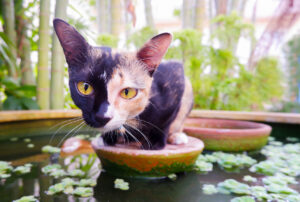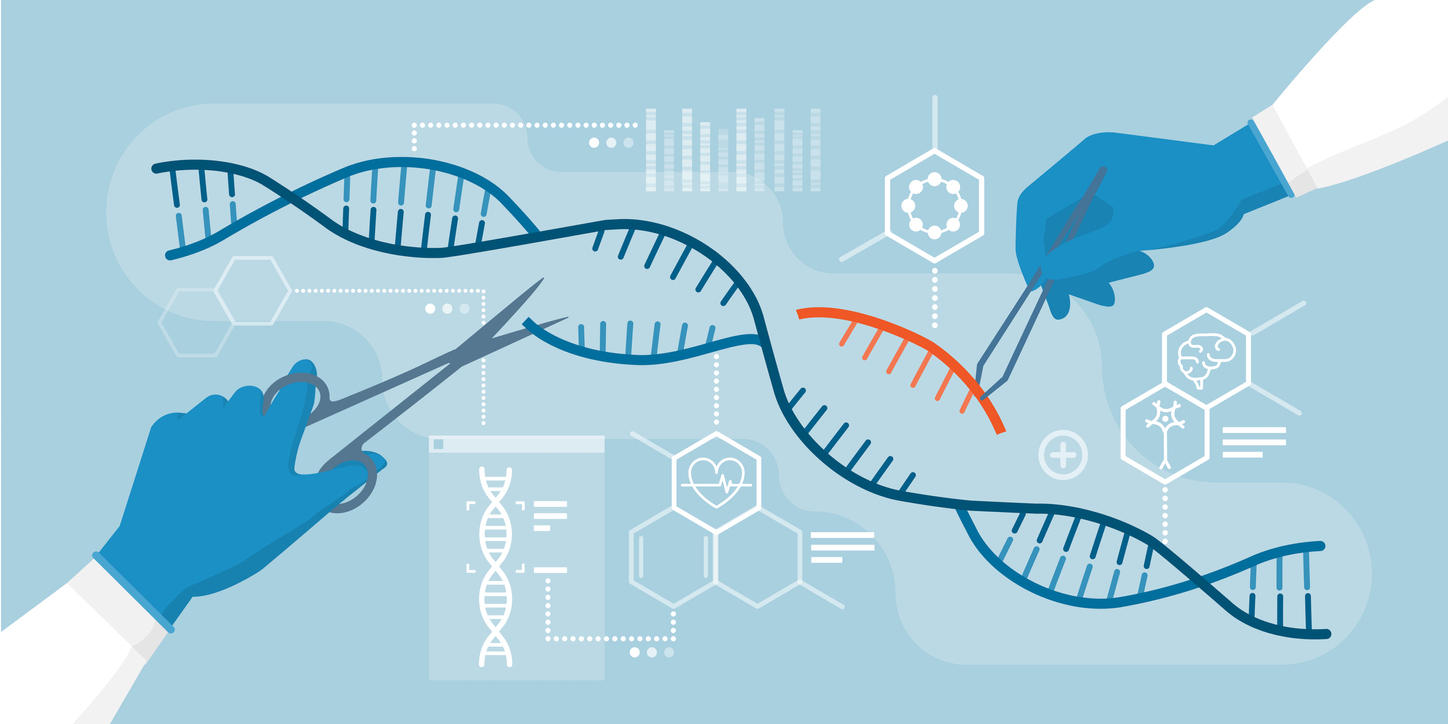With our ever-evolving understanding, it’s clear that genetics is a fascinating topic affecting many parts of our lives. These three genetic mysteries will make you wonder where humanity is heading.
From health to food to sport, the world of genetics stretches into our day-to-day life in ways we probably never realise. You might have noticed that it’s popular in the news to present sensationalist articles about genetic advancements alongside ominous warnings about how it will affect the future. As someone who has worked in a genetics lab, these often don’t tell the full story and can obscure the genuine, exciting research being done to uncover long-standing genetic mysteries. Read on to discover three genetic mysteries that are changing the way we look at our DNA and the future of humanity.
Gene editing with CRISPR
CRISPR is a biological system for altering DNA. It has been celebrated throughout the scientific community as a fast, cheap, and accurate gene editing technology. CRISPR has already been used to:
- Reduce the spread of malaria with gene edited mosquitos
- Engineer crops to withstand extreme weather
- Treat a range of human diseases
CRISPR is revolutionising experimental therapies for genetic disorders ranging from sickle cell disease to blindness. In cancer biology, CRISPR has been identified as a potentially robust treatment tool due to its simplicity and efficiency. However, since gene editing is still in its infancy, there is growing concern around where society should draw the line. Removing or editing inherited disease-causing genes could risk introducing undesirable changes to future generations.
In 2018, a Chinese biophysicist announced that he had created the first genetically altered babies. He had used CRISPR to edit embryos to make them less susceptible to HIV, resulting in the birth of the CRISPR twins, Lulu and Nana. The announcement was met with outrage from scientists and ethicists; the biophysicist was later arrested for medical malpractice. It has since been reported that the alterations made to the twins’ DNA is not expected to make them immune to HIV. However, it is believed that the edits could improve neuroplasticity, which may result in improved brain recovery and greater academic success. How this may affect future generations is something we will not truly understand for centuries to come.
In March 2023, the Third International Summit on Human Genome Editing is expected to take place. Scientists, ethicists, and stakeholders from around the world will discuss the current state of the technology and the development of regulations, among other topics. So, expect to hear more about how CRISPR might change the world.
The gender spectrum
Biological gender is often thought to be black and white. However, there are many naturally occurring genetic variations that can result in slightly different development, possibly effecting outward looking gender and fertility. These are often referred to as differences in sexual development (DSD).
DSDs usually occur when there is an alteration to an individual’s X or Y chromosomes – the ones that determine biological gender. One study suggests that up to 1.7% of the population has an alteration to these chromosomes and that approximately 0.5% of people have clinically identifiable variations. (For comparison, around 2% of the population have green eyes!)
DSD came into the public eye when the gender of double Olympic gold medallist, Caster Semenya, came under scrutiny. Media reports claimed she had both male and female characteristics including a higher-than-normal level of testosterone. A World Athletics rule around DSD led to Semenya and others being banned from the Olympics due to a ‘significant competitive advantage’. A phrase that has since been changed to ‘higher athletic performance.’ In 2021, World Athletics acknowledged potentially misleading claims around DSD and called for more studies on the subject.
While gender is a particularly controversial subject in sport and athletics, it’s important that we allow our definitions of gender to be broad and flexible. This way we can appreciate the reality of biological and genetic diversity in our population, and work towards a fairer and more equal society.
Mixing it up with mosaicism
In 2002, an American woman, Lydia Fairchild, was pregnant with her third child. When she separated from her partner, she applied for child support. However, DNA testing suggested she was not the mother of her two children and Lydia was taken to court for suspected fraud.
During the birth of her third child, a judge ordered an observer to be present. However, two weeks later, DNA tests indicated that Lydia was not the mother of that child either.
Following further tests, it was discovered that Lydia had two separate cell lines or DNA profiles. The DNA in her skin, hair and blood didn’t match those of her children, but DNA from a cervical smear eventually did, and Lydia became known nationwide as her own twin.

Domestic cat chimera with turtle color sits in a pond in the garden
This phenomenon, where an organism has two different DNA profiles as opposed to one, is called mosaicism. These individuals may also be called chimeras. Chimeras are relatively common in marine environments, where colonial animals, like corals, regularly form fusion individuals. Interestingly, chimeras are not rare among household cats either. In fact, most male tortoiseshell cats are chimeras and can be identified by their distinctive coat patterns.
In medical research, biologists have been creating chimeras for decades. This has included creating mice with human immune systems or growing human organs in pigs for transplants. While the aim of this work is to develop new treatments, the creation of these animal-human chimeras is controversial.
In terms of human genetic analysis, it’s now common for scientists to bear in mind the possibility of a naturally occurring mosaic genomic profile and the implications this can have on the development of disease. However, further research is needed before mosaicism can be effectively used as a biomarker for early disease detection.
Conclusion
Genetics is a fascinating world of science, ethics, and family. Understanding it can open our eyes to the diversity of humanity today and our involvement is likely to have a huge impact on who we are tomorrow.
At Notch our team is made up of scientists and marketeers, specialising in life science, biotech and chemistry marketing. To learn more about how Notch’s creative B2B marketing communication solutions can help you in the science and technology space, click here to get in touch: https://notchcommunications.co.uk/get-in-touch/
Meet Madi
 Following her undergraduate degree in Biology with Biomedicine, Madi worked at Manchester’s Genomic Laboratory Hub as a Senior Genetic Technologist. There, she managed multiple NGS cancer workflows, with a team that provided life-saving diagnostic and prognostic information. A writer at heart, Madi left the lab and joined Notch, in order to communicate scientific developments and innovations. Out of work, Madi is an animal lover and creative writer.
Following her undergraduate degree in Biology with Biomedicine, Madi worked at Manchester’s Genomic Laboratory Hub as a Senior Genetic Technologist. There, she managed multiple NGS cancer workflows, with a team that provided life-saving diagnostic and prognostic information. A writer at heart, Madi left the lab and joined Notch, in order to communicate scientific developments and innovations. Out of work, Madi is an animal lover and creative writer.

